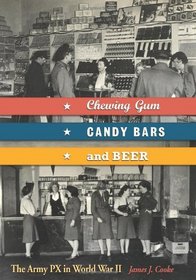Search -
Chewing Gum, Candy Bars, and Beer: The Army Px in World War II
Chewing Gum Candy Bars and Beer The Army Px in World War II
Author:
Veterans of World War II have long sung the praises of the PX - a little piece of home in far-flung corners of the world. Though many books on that war tell of combat operations and logistics in detail, this is the first to tell the full story of the Army Exchange System. The AES was dedicated to providing soldiers with some of the comforts they... more »
Author:
Veterans of World War II have long sung the praises of the PX - a little piece of home in far-flung corners of the world. Though many books on that war tell of combat operations and logistics in detail, this is the first to tell the full story of the Army Exchange System. The AES was dedicated to providing soldiers with some of the comforts they... more »
ISBN-13: 9780826218674
ISBN-10: 0826218679
Publication Date: 11/30/2009
Pages: 208
Edition: 1
Rating: ?
ISBN-10: 0826218679
Publication Date: 11/30/2009
Pages: 208
Edition: 1
Rating: ?
0 stars, based on 0 rating
Publisher: University of Missouri Press
Book Type: Hardcover
Members Wishing: 1
Reviews: Amazon | Write a Review
Book Type: Hardcover
Members Wishing: 1
Reviews: Amazon | Write a Review
Genres:




